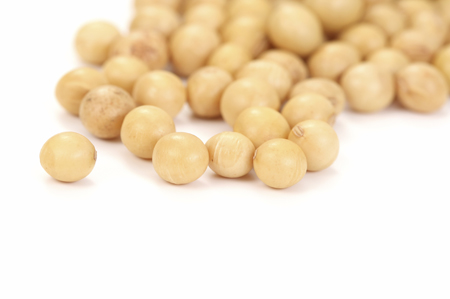 (Agrimoney) – The impact of Beijing’s crop subsidy reforms has not gone far enough yet to encourage growers to plant soybeans instead of corn, US officials said, sticking by estimates of record Chinese imports of the oilseed.
(Agrimoney) – The impact of Beijing’s crop subsidy reforms has not gone far enough yet to encourage growers to plant soybeans instead of corn, US officials said, sticking by estimates of record Chinese imports of the oilseed.
China’s cabinet two weeks ago restated aims to stem the corn production boom which has left the country with huge stocks of the grain, with a support shake-up, including the removal of guaranteed prices, aimed to cut corn sowings by 0.7% a year to 33.3m hectares by 2020.
Production of soybeans, meanwhile – of which China is the top importer, to provide soymeal for its huge hog herd and growing cattle population – is seen gaining 43% to 9.3m hectares from 2015-20.
The impact of the reforms has already been a sharp drop in corn prices, with cash values in Jiamusi, in the key north eastern producing province of Heilongjiang, down some 500 yuan a tonne year on year at 1,240-1,320 a tonne, according to the state news agency Xinhua.
However, market dynamics still do not favour growers switching from corn to soybeans, the US Department of Agriculture bureau in Beijing said.
‘Soybean price still too low’
“Currently, the marketing of soybeans in the north eastern provinces remained slow as the soybean price is lower than expected ranging from 3,500-3,600 yuan a tonne,” the USDA bureau said in a report.
The unexpectedly soft price comes despite a disappointing domestic harvest, which was hurt by drought in July and August, when rains in key growing areas were “merely one-fifth of the average level”, the bureau said, cutting by 300,000 tonnes to 12.7m tonnes its estimate for Chinese soybean output this year.
“Most soybean farmers complain that losses in 2016-17 were greater than the previous year.
“Despite the fact that a reported 2,250 yuan ($335) per hectare direct subsidy to soybean farmers in the Heilongjiang and Liaoning provinces may offset part of farmer’s losses, the soybean price may still be too low to make soybean planting as profitable as corn and rice.”
High on the hog
Still, Chinese soybean supplies are being upheld by record imports, which the bureau estimated at 86m tonnes in 2016-17.
That figure is in line with the USDA’s official forecast, although above projections from the likes of the state’s CNGOIC think tank, which sees the figure at 85m tonnes, and the 84.6m tonnes expected by private analysis group JCI China.
The bureau said its estimate was “based on a forecast steady growth in protein meal consumption to meet the animal production sector demand”, with the country’s pig herd expected by industry officials to maintain a “relatively slow” recovery.
“Some sources, however, claim that the recovery might be higher than the official report driven by the constant high profit margins,” the bureau said.
“Sows are transferred to central and north provinces with less environmental pressure and pigs are raised to a higher weight in response to tight supply of piglets at high prices.”
Rapeseed imports
The bureau also nudged higher to 4.2m tonnes its forecast for Chinese rapeseed imports in 2016-17, 400,000 tonnes above the USDA’s official forecast.
“Higher-than-previously-expected” world production of the oilseed, combined with “China’s large crushing capacity, and China’s lower-than-officially reported domestic rapeseed production”, were cited as reasons behind the upgrade.
China in August delayed plans for a clampdown on Canadian exports of rapeseed variant canola, in the face of tight domestic supplies.




